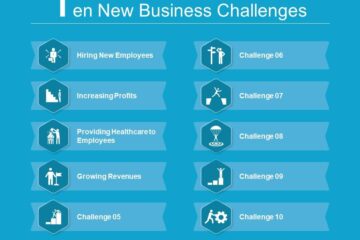
Today’s executives are dealing with a complex and unprecedented brew of social, environmental, market, and technological trends. These require sophisticated, sustainability-based management. Yet executives are often reluctant to place sustainability core to their company’s business strategy in the mistaken belief that the costs outweigh the benefits. On the contrary, academic research and business experience point to quite the opposite.
Embedded sustainability efforts clearly result in a positive impact on business performance. Drawing from our own research and our colleagues’ research in this area, we have created a sustainability business case for the 21st century corporate executive. Hoping to alleviate their concerns, this article also provides concrete examples of how sustainability benefits the bottom line.
For the purpose of this article, we define sustainable practices as those that: 1) at minimum do not harm people or the planet and at best create value for stakeholders and 2) focus on improving environmental, social, and governance (ESG) performance in the areas in which the company or brand has a material environmental or social impact (such as in their operations, value chain, or customers). We exclude companies with a traditional CSR program that supports employee volunteering in the community – this does not by itself qualify as sustainability.
Driving competitive advantage through stakeholder engagement
Traditional business models aim to create value for shareholders, often at the expense of other stakeholders. Sustainable businesses are redefining the corporate ecosystem by designing models that create value for all stakeholders, including employees, shareholders, supply chains, civil society, and the planet. Michel Porter and Mark Kramer pioneered the idea of “creating shared value,” arguing that businesses can generate economic value by identifying and addressing social problems that intersect with their business.
Much of the strategic value of sustainability comes from the need to continually talk with and learn from key stakeholders. Through regular dialogue with stakeholders and continual iteration, a company with a sustainability agenda is better positioned to anticipate and react to economic, social, environmental, and regulatory changes as they arise.
When firms fail to establish good relationships with their stakeholders, it can lead to increased conflict and reduced stakeholder cooperation. This can disrupt a firm’s ability to operate on schedule and budget. A study of the gold mining industry, for example, found that stakeholder relations can heavily influence land permitting, taxation, and the regulatory environment, thus playing a substantial role in determining whether a firm has the right to transform gold into shareholder capital – therefore, as the study authors wrote, stakeholder engagement “is not just corporate social responsibility but enlightened self-interest.”
Improving risk management
Supply chains today extend around the world, and are vulnerable to natural disasters and civil conflict. Climate change, water scarcity, and poor labor conditions in much of the world increase the risk. McKinsey reports that the value at stake from sustainability concerns can be as a high as 70% of earnings before interest, taxes, depreciation, and amortization.
In the largest study on climate change data and corporations, 8,000 supplier companies (that sell to 75 multinationals) reported on their level of climate risk. Of the respondents, 72% said that climate change presents risks that could significantly impact their operations, revenue, or expenditures.
Unlike traditional forms of business risk, social and environmental risks manifestthemselves over a longer term, often affect the business on many dimensions, and are largely outside the organization’s control. Managing risks therefore requires making investment decisions today for longer-term capacity building and developing adaptive strategies.
In the agriculture, food, and beverage sector, the impacts of climate change have the potential to alter growing conditions and seasons, increase pests and disease, and decrease crop yields. Disruptions in the supply chain may affect production processes that depend on unpriced natural capital assets such as biodiversity, groundwater, clean air, and climate. These unpriced natural capital costs are generally internalizeduntil events like floods or droughts cause disruption to production processes or commodity price fluctuation.
For example, Bunge, an agribusiness firm, reported a $56 million quarterly loss in its sugar and bioenergy segments due to drought in 2010. Flooding in 2011 in Thailand, harmed 160 companies in the textile industry and halted nearly a quarter of the country’s garment production, increasing global prices by 28%.
To address these threats along their supply chain, companies like Mars, Unilever, and Nespresso have invested in Rainforest Alliance certification to help farmers deal with climate volatility, reduce land degradation, and increase resilience to drought and humidity—all of which ensure the long-term supply of their agricultural products. Certification also improves productivity and net income: According to an independent study by COSA, Rainforest Alliance reported that certified cocoa farmers in Cote d’Ivoire, for example, produced 1,270 pounds of cocoa per hectare, compared with 736 pounds per hectare on non-certified farms. Net income was also significantly higher on certified cocoa farms than noncertified: $403 versus $113 USD per hectare.
Companies are also experiencing risks in their manufacturing due to resource depletion – particularly water. Water has largely been considered a free raw material and therefore used inefficiently, but many companies are now experiencing the higher costs of using the resource. Coca-Cola, for example, faced a water shortage in India that forced it to shut down one of its plants in 2004. As the 24th biggest industrial consumer of water, Coca Cola has now invested $2 billion to reduce water use and improve water quality in the communities in which it operates. SabMiller has also invested heavily in water conservation, including $6 million to improve equipment at a facility in Tanzania affected by deteriorating water quality.
Water-related risks threaten to strand billions of dollars for mining, oil, and gas companies. “Stranded assets” are investments that become obsolete due to regulatory, environmental, or market constraints. For example, social conflict related to disruptions to water supplies in Peru has resulted in the indefinite suspension of $21.5 billion in mining projects since 2010.
Fostering innovation
Investing in sustainability is not only a risk management tool; it can also drive innovation. Redesigning products to meet environmental standards or social needs offers new business opportunities. 3M, for example, integrates sustainability into its innovation pipeline through its “Pollution Prevention Pays” program, which aims to proactively minimize waste and avoid pollution through product reformulation, equipment redesign, process modification, and waste recycling. 3M’s Novec fire suppression fluids are the first viable, sustainable alternative to hydrofluorocarbons.
Nike embedded sustainability into its innovation process and created the $1 billion-plus Flyknit line, which uses a specialized yarn system, requiring minimal labor and generating large profit margins. Flyknit reduces waste by 80% compared with regular cut and sew footwear. Since its launch in 2012, Flyknit has reduced 3.5 million pounds of waste and fully transitioned from yarn to recycled polyester, diverting 182 million bottles from landfills.
Recognizing the growing consumer interest in sustainable products and looking to solve consumer challenges such as high energy costs, CPG companies have developed new products to gain access to this market. Proctor & Gamble, for example, conducted a life cycle assessment of its products and found that U.S. households spend 3% of annual electricity budgets on heating water to wash clothes. In 2005, they launched a U.S. and European line of cold-water detergents that require 50% less energy than warm water washing.
Facing strict regulation on chemical release and competition from flowers from Africa, the Dutch flower industry developed a closed-loop system that grows flowers hydroponically in greenhouses, lowering risk of infestation and reducing the use of fertilizers and pesticides. The system also improves product quality by creating regulated growing conditions. Their innovative system has increased productivity and quality, reduced environmental impact and costs, and increased global competitiveness.
Improving Financial Performance
Many business leaders have the erroneous perception that one can have profits or sustainability, but not both. This probably has its roots in Milton Friedman’s 50-year old, but still influential, thesis that the only business of a business is profit as well as a hangover from the 1970s and 80s, when low quality, high priced environmental products failed in the market and early socially responsible investing delivered low returns. That conventional wisdom has now reversed.
In addition to the financial benefits that accrue from increased competitive advantage and innovation as discussed earlier, companies are realizing significant cost savings through environmental sustainability-related operational efficiencies. Moreover, investors are now able to track the high performers on ESG (environmental, social and governance factors) and are correlating better financial performance with better ESG performance.
Significant cost reductions can result from improving operational efficiency through better management of natural resources like water and energy, as well as minimizing waste. One study estimated that companies experience an average internal rate of return of 27% to 80% on their low carbon investments.
Since 1994, Dow has invested nearly $2 billion in improving resource efficiency and has saved $9.8 billion from reduced energy and wastewater consumption in manufacturing. In 2013, GE had reduced greenhouse gas emissions by 32% and water use by 45% compared to 2004 and 2006 baselines, respectively, resulting in $300 million in savings.
A focus on sustainability can also unlock opportunities for process and logistics savings. Wal-Mart, for example, aimed to double fleet efficiency between 2005 and 2015 through better routing, truck loading, driver training, and advanced technologies. By the end of 2014, they had improved fuel efficiency approximately 87% compared to the 2005 baseline. In that year, these improvements resulted in15,000 metric tons of CO2 emissions avoided and savings of nearly $11 million.
Mounting evidence shows that sustainable companies deliver significant positive financial performance, and investors are beginning to value them more highly. Arabesque and University of Oxford reviewed the academic literature on sustainability and corporate performance and found that 90% of 200 studies analyzed conclude that good ESG standards lower the cost of capital; 88% show that good ESG practices result in better operational performance; and 80% show that stock price performance is positively correlated with good sustainability practices.
Here are some other datapoints to consider: Between 2006 and 2010, the top 100 sustainable global companies experienced significantly higher mean sales growth, return on assets, profit before taxation, and cash flows from operations in some sectors compared to control companies. During the 2008 recession, companies committed to sustainability practices achieved “above average” performance in the financial markets during the 2008 recession, translating into an average of $650 million in incremental market capitalization per company. Additionally, companies with superior environmental performance experienced lower cost of debt by 40-45 basis points. Studies also suggest that companies with strong corporate responsibility reputations “experience no meaningful declines in share price compared to their industry peers during crises” versus firms with poor CSR reputations whose reputations declined by “2.4-3%; a market capitalization loss of $378M per firm.”
Investors are paying attention. According to the 2015 EY Global Institutional Investor Survey, investors are increasingly using companies’ nonfinancial disclosures to inform their investment decisions. In its survey of over 200 institutional investors, 59.1% of respondents view nonfinancial disclosures as “essential” or “important” to investment decisions, up from 34.8% in 2014. Some 62.4% of investors are concerned about the risk of stranded assets (i.e. assets that lose value prematurely due to environmental, social, or other external factors) and over one-third of respondents reported cutting their holdings of a company in the past year because of this risk.
Building Customer Loyalty
Companies are skeptical about consumer interest in sustainable products – especially where willingness-to-pay is concerned. Some of that is self-inflicted, as early on companies tended to increase “sustainable” product prices substantially and in some cases sold inferior products (e.g. pricy natural cleaning products that did not work).
However, a shift is occurring in the minds of consumers. Today’s consumers expect more transparency, honesty, and tangible global impact from companies and can choose from a raft of sustainable, competitively priced, high quality products. In fact, one study found that among numerous factors surveyed, the news coverage regarding environmental and social responsibility was the only significant factor that affected respondents’ evaluation of a firm and intent to buy.
Nearly two-thirds of consumers across six international markets believe they “have a responsibility to purchase products that are good for the environment and society” — 82% in emerging markets and 42% in developed markets. In the food and beverage industry, a growing number of consumers are considering values beyond price and taste in their purchasing decisions, such as safety, social impact, and transparency.
Far from feeling skittish about buying sustainable products, today’s consumersperceive a higher level of product performance in products from sustainable companies and sustainability information has a significantly positive impact on consumers’ evaluation of a company, which translates into purchase intent. The results of these studies support that consumers in a post-Recession era are shifting purchasing decisions to brands with integrity, social responsibility, and sustainability at their core. In fact, Unilever claims its “brands with purpose” are growing at twice the rate as others in their portfolio.
Companies can also charge higher price premiums based on positive corporate responsibility performance. These premiums can reach 20% according to some estimates. Moreover, some studies show that overall sales revenue can increase up to 20% due to corporate responsibility practices.
Another study found that revenues from sustainable products and services grew at six times the rate of overall company revenues between 2010 and 2013, among the 12 members of the S&P Global 100 sampled (Singer, 2015). GE’s Ecomagination division, for example, has generated $200 billion in sales since 2005. IKEA’s line of sustainable products like LED bulbs and solar panels from its Products for a More Sustainable Life at Home now generate a billion dollars.
Attracting and Engaging Employees
Corporate sustainability initiatives aimed at improving ESG performance and proving value to society can increase employee loyalty, efficiency, and productivity and improve HR statistics related to recruitment, retention, and morale.
Research is finding that 21st century employees are focusing more on mission, purpose, and work-life balance. Companies that invest in sustainability initiatives tend to create sought-after culture and engagement due to company strategy focusing more on purpose and providing value to society. In addition, companies who embed sustainability in their core business strategy treat employees as critical stakeholders, just as important as shareholders. Employees are proud to work there and feel part of a broader effort.
One study found that morale was 55% better in companies with strong sustainability programs, compared to those with poor ones, and employee loyalty was 38% better. Better morale and motivation translate into reduced absenteeism and improved productivity. Firms that adopted environmental standards have seen a 16% increase in productivity over firms that did not adopt sustainability practices.
Corporate responsibility performance also positively impacts turnover and recruitment. Studies show that firms with greater corporate responsibility performance can reduce average turnover over time by 25-50%. It can also reduce annual quit rates by 3-3.5%, saving replacement costs up to 90%-200% of an employee’s annual salary for each retained position.
[Source:-HBR]




